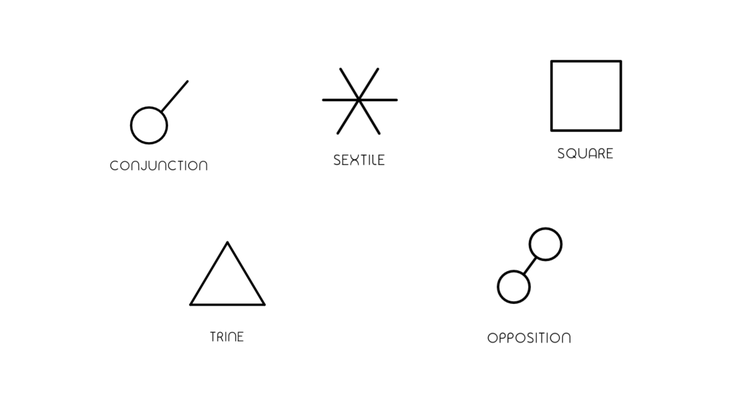
These Are the Essential Astrology Terms You Need to Know
“], “filter”: { “nextExceptions”: “img, blockquote, div”, “nextContainsExceptions”: “img, blockquote, a.btn, a.o-button”} }”>
Heading out the door? Read this article on the new Outside+ app available now on iOS devices for members!
>”,”name”:”in-content-cta”,”type”:”link”}}”>Download the app.
Many of us sense the push and pull, opening and closing, release and spark of the planets and luminaries moving and dancing in the cosmos. Yet encountering the various astrology terms and symbols can, at times, feel like approaching an entirely different language.
Whether you’re here to simply yet profoundly continue feeling and moving with the changing vibes or perhaps grasp more of the details and intricacies, an understanding of some of the most commonly used astrological terms will take you there.
Essential Astrology Terms You Need to Know
Astrology is vast in its explorations. Knowing the following astrological terms helps demystify your experience of astrology and can help you settle into a more felt understanding of it.
Ascendant
Also known as your rising sign, your ascendant is the constellation in the zodiac, and possible planets, that were literally rising along the eastern horizon at the moment of your birth. It is an interface through which you meet life–weaving together your inner with your outer persona—and the filter through which you move, perceive, and are perceived. Shaping and influencing your presence and aura, your ascendant is also the “vibe” that emanates from you. Your ascendant is always your first house.
Nodes
The Moon’s nodes, also known as the lunar nodes, are the most prominent points of destiny, purpose, and soul growth in astrology. Often referred to as the “path of destiny,” they comprise the north node and south node. While the north node is our direction of evolution and expansion, the south node is the expression of where we are coming from.
Modality
The three modalities are cardinal, fixed, and mutable. Also known as modes, qualities, or quadruplicities, modalities are categories representing how energy moves—fire, earth, air, or water. Each modality contains four of the twelve zodiac signs. Modalities show us the rhythm or style a sign uses to express itself, whether initiating, maintaining, or changing. While some signs begin, some sustain, and others transform.
Cardinal
Cardinal is a type of modality and categorizes zodiac signs that are here to initiate. These signs breathe new life into a season, chapter, project, or movement. They come to life when able to receive and act on inspiration by bringing something new into the world. The cardinal signs are Aries, Cancer, Libra, and Capricorn. The beginning of the season for each of these signs aligns with the Earth beginning a new season.
Fixed
Fixed is a type of modality that bridges together the zodiac signs that here to maintain. Comprised of Taurus, Leo, Scorpio, and Aquarius, these signs sustain, stabilize, and put down roots. They offer focus and help hold things in place while deepening into what’s already begun. They always meet us midway through one of Earth’s seasons, which mirrors their medicine of sinking into the current chapter.
Mutable
Our final modality speaks to change. Mutable zodiac signs support us to adapt, shift, and transition into what is coming next. Made up of Gemini, Virgo, Sagittarius, and Pisces, their gift is that of flexibility, openness, surrender, and flow—they are the energy type mirroring one of life’s great truths—the only constant is change. Aligning with the Earth, we meet the mutable signs during the final moments of each season.
Retrograde
A retrograde is the perceived backward movement of a planet in our cosmos. The backward movement is not objectively accurate, as astrology is a geocentric system, meaning it’s based on our perspective from Earth. When a planet seems to overtake another in its orbit, from the Earth it looks as if the planet being overtaken has, for a moment, slowed down and begun moving backward.
Astrologically, this perceived reversal can be felt as a shift in energy, as if the planet in question—and the part of you mirrored by the planet’s archetype—has turned inward, slowed down, and asked to review aspects of yourself for the purpose of realignment.
Cazimi
An astrological term derived from the Arabic word kaṣmīmī, meaning “in the heart,” a cazimi occurs when a planet comes into an exact conjunction with the Sun, as if it is entering the heart of the Sun. Symbolically, a cazimi represents a rebirth for the planet in question, as if offered the renewal, vitality, and life force of the Sun. When cazimi, the planet is beginning a new cycle.
Return
A return is when a planet returns to the position it was in at the moment of your birth. Each year, you meet a solar return—your birthday—when the Sun comes back to the sign and degree it was in when you were born. Each month, you are also gifted a lunar return. Note that the faster-moving inner planets return to this position many times throughout your life, whereas the outer planets move far too slowly for this to be a regular occurrence. The exact frequency of a plant’s return depends on retrogrades.
Solar Return: Every year (this is your birthday)
Lunar Return: Every month
Mercury Return: Approximately every 88 days
Venus Return: Approximately every 19 months
Mars: Approx. every 2 years
Jupiter: Every 12 years
Saturn: Every 29 1/2 years
Uranus: Every 84 years
Neptune: Every 165 years
Pluto: Every 248 years
Aspect
In their most simplistic form, aspects are the angular relationships between planets or captured in the birth chart. The aspects planets are making to one another show us how they are interacting. Different angles between planets represent different energy flows. Is there collaboration and partnership? Or are these planets experiencing some kind of tension and charge? While there are many astrological aspects, the primary are the conjunction, opposition, trine, square, and sextile.

Conjunction
A conjunction is the coming together of two or planets in the cosmos or a birth chart. While conjunct, these planets are merged, blending their energy as if creating a new planet or essence during that moment. There is neither obvious ease or tension with a conjunction. It depends on which planets are together. However, when one occurs, it is a major focal point of energy.
Opposition
As the name suggests, an opposition is two planets opposite one another, in opposite signs, or 180 degrees apart. Planets opposing one another are seemingly looking in different directions and desiring opposite things. Although that may be true from one perspective, another perspective is that each opposite sign is in partnership with joint themes and explorations that bridge their apparent polarity and duality.
Trine
A trine is the coming together of planets at a 120-degree angle. Trine aspects find the planets in question in the same element sign—whether fire, air, water or earth—and offer an easeful flow of energy. Trines as they form in the cosmos offer openings and opportunities. Trines in a birth chart can represent innate talent and where we find pleasure or recharge our energy.
Square
Squares are planets 90 degrees in separation. This represents an element of tension between the two cosmic bodies, with each planet placing the other under some kind of strain or pressure . While uncomfortable at times, this pressure provides an immense amount of energy, potential, drive, and will. Planets in square relationships demand release through action which allows the expression of both bodies.
Sextile
Sextile planets are in a 60-degree angle with one another, offering an easeful flow of partnership and harmony, spark and inspiration. The major difference between a trine and a sextile is the planets are in different element signs, such as fire sextiles air or earth sextiles water. There is enough difference here to spark excitement. The two planets in a sextile desire to create, move, and play together.
Stellium
While not technically referred to as an aspect in astrology terms, a stellium is the combination of three or more planetary bodies in a single sign or house. The interpretation of a stellium is based largely on the planets involved. Whether the bodies are in the current cosmos or birth chart, a stellium reveals a profound emphasis on that zodiac sign or astrological house with each of these planets simultaneously expressing its energy at once.










